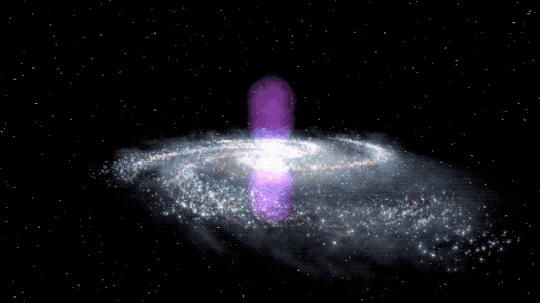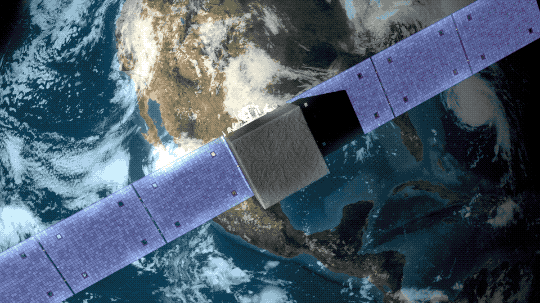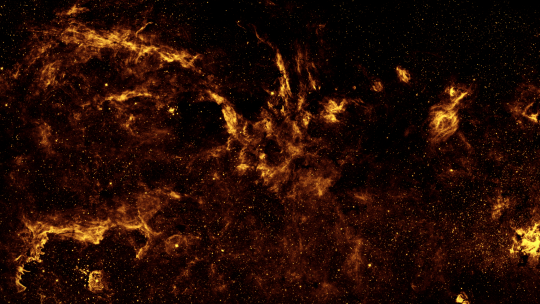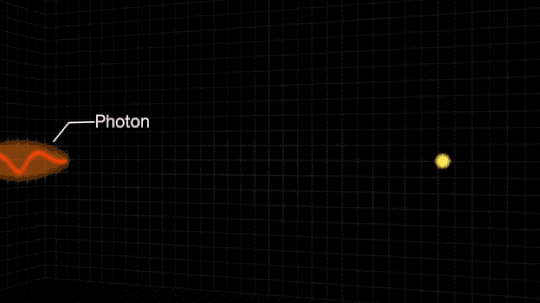
Did you know our Milky Way galaxy is blowing
bubbles? Two of them, each 25,000 light-years tall! They extend above and below
the disk of the galaxy, like the two halves of an hourglass. We can’t see them
with our own eyes because they’re only apparent in gamma-ray light, the highest-energy light in the
universe.

We didn’t even know these humongous structures were smack in the middle of
our galaxy until 2010. Scientists found them when they
analyzed the first two years of data from NASA’s Fermi Gamma-ray Space Telescope.
They dubbed them the “Fermi bubbles” and found that in addition to being really
big and spread out, they seem to have well-defined edges. The bubbles’ shape
and the light they give off led scientists to think they were created by a
rapid release of energy. But by what? And when?

One possible explanation is that they could be
leftovers from the last big meal eaten by the supermassive black hole at the
center of our galaxy. This monster is more than 4 million times the mass of our
own Sun. Scientists think it may have slurped up a big cloud of hydrogen
between 6
and 9 million years ago and then burped jets of hot gas
that we see in gamma rays and X-rays.

Another possible explanation is that the bubbles
could be the remains of star formation. There are massive clusters of stars at
very the center of the Milky Way — sometimes the stars are so closely packed they’re a million times more dense than in the outer
suburb of the galaxy where we live. If there was a burst
of star formation in this area a few million years ago, it could have created
the surge of gas needed to in turn create the Fermi bubbles.

It took us until 2010 to see these Fermi bubbles
because the sky is filled with a fog of other gamma rays that can obscure our
view. This fog is created when particles
moving near light speed bump into gas, dust, and light in the Milky Way. These
collisions produce gamma rays, and scientists had to factor out the fog to
unveil the bubbles.

Scientists continue to study the possible causes
of these massive bubbles using the 10 years of data Fermi has collected so far.
Fermi has also made many other exciting discoveries — like the the collision of superdense neutron stars
and the nature
of space-time. Learn more
about Fermi and how we’ve been celebrating its first decade in space.
Make sure
to follow us on Tumblr for your regular dose of space: http://nasa.tumblr.com



Комментариев нет:
Отправить комментарий